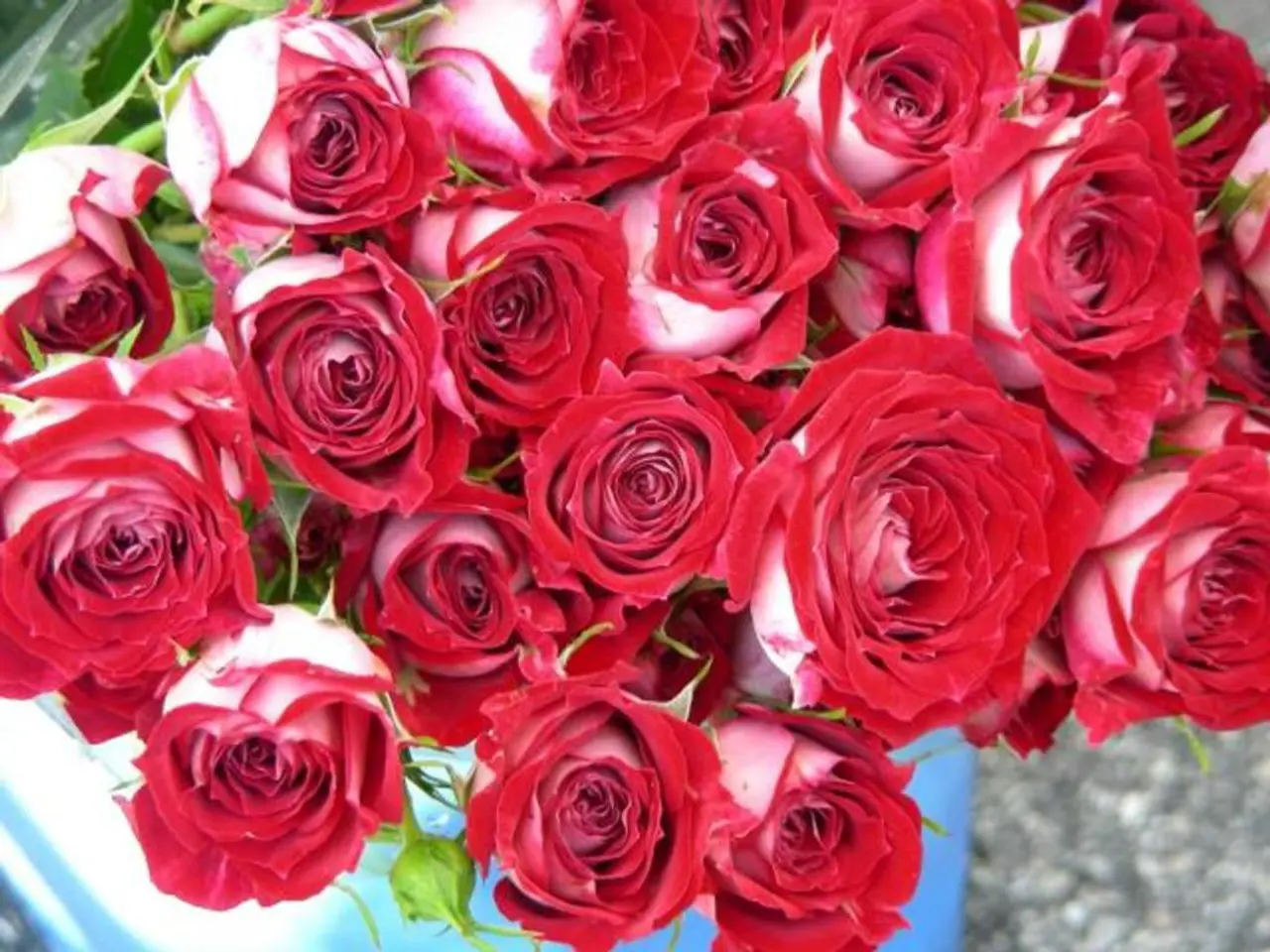Top Picks for Rose's Accompanying Blossoms
Roses, admired for their beauty and elegance, can benefit from companion plants in a rose garden. These plants not only enhance the color and fragrance of blooms but also help deter pests, improve soil, and extend garden interest. Here are seven top companion plants for roses:
- Dianthus – This low-growing plant with pale pink to vibrant hues complements rose colors and textures. Its strong scent helps deter pests and thrives in well-drained soil similar to roses.
- Agastache – Known for attracting beneficial insects like bees and butterflies, Agastache helps with pollination and enhances air circulation around roses, reducing fungal diseases such as powdery mildew.
- Lavender – Lavender is drought-tolerant, fragrant, and acts as a natural pest repellent. Its silvery foliage and spikes of purple flowers create a striking visual contrast with rose blooms.
- Catmint (Nepeta) – Producing wispy blue-gray spires, catmint camouflages any leggy rose stems and offsets pale pink rose blossoms beautifully. It also attracts pollinators and serves as a living mulch.
- Lady’s Mantle (Alchemilla) – Its soft, frothy foliage and chartreuse flowers hide rose stems and provide a delicate textural contrast. Lady's Mantle keeps soil shaded and mulched, enhancing rose root health.
- Helichrysum – Featuring attractive silver foliage, Helichrysum acts as a filler plant around roses, creating pleasing texture contrasts while supporting rose health and garden diversity.
- Zinnias – These colorful, pollinator-friendly flowers add vibrant summer color and support beneficial insect populations around roses, fostering a lively and healthy garden ecosystem.
These companion plants improve pest control, enhance air circulation, extend garden interest, conceal leggy rose stems, serve as living mulch, provide contrast in texture, color, and form, and complement rose blossoms, contributing to a more dynamic and attractive garden design.
In addition to these, culinary herbs can also be good companion plants for roses. Proper spacing of plants like dianthus, agastache, and lavender is important for promoting air circulation and preventing fungal diseases. Hardy geranium is a disease-resistant perennial that acts as excellent ground cover in a rose bed, filling gaps and complementing roses.
Artemisia, a silver-leafed plant, thrives in poor soil and helps improve soil structure, providing a contrast to the vibrant colors of roses. Its aromatic foliage also helps repel pests. Lastly, consider the versatile and hardy catmint, which pairs well with roses and is a magnet for beneficial insects.
For a healthier microenvironment for roses and a more colorful, textured, and visually appealing garden, consider incorporating these companion plants into your rose garden.
- A home-and-garden lifestyle that includes roses could benefit from adding companion plants such as Dianthus, Agastache, Lavender, Catmint, Lady’s Mantle, Helichrysum, and Zinnias, as they improve pest control, enhance air circulation, and provide vibrant colors and textures.
- In addition to these, homeowners may consider incorporating culinary herbs, hardy geraniums, Artemisia, and catmint into their rose garden as they serve as living mulch, ground cover, pest repellents, and magnets for beneficial insects, contributing to a healthier microenvironment and more visually appealing garden design.




